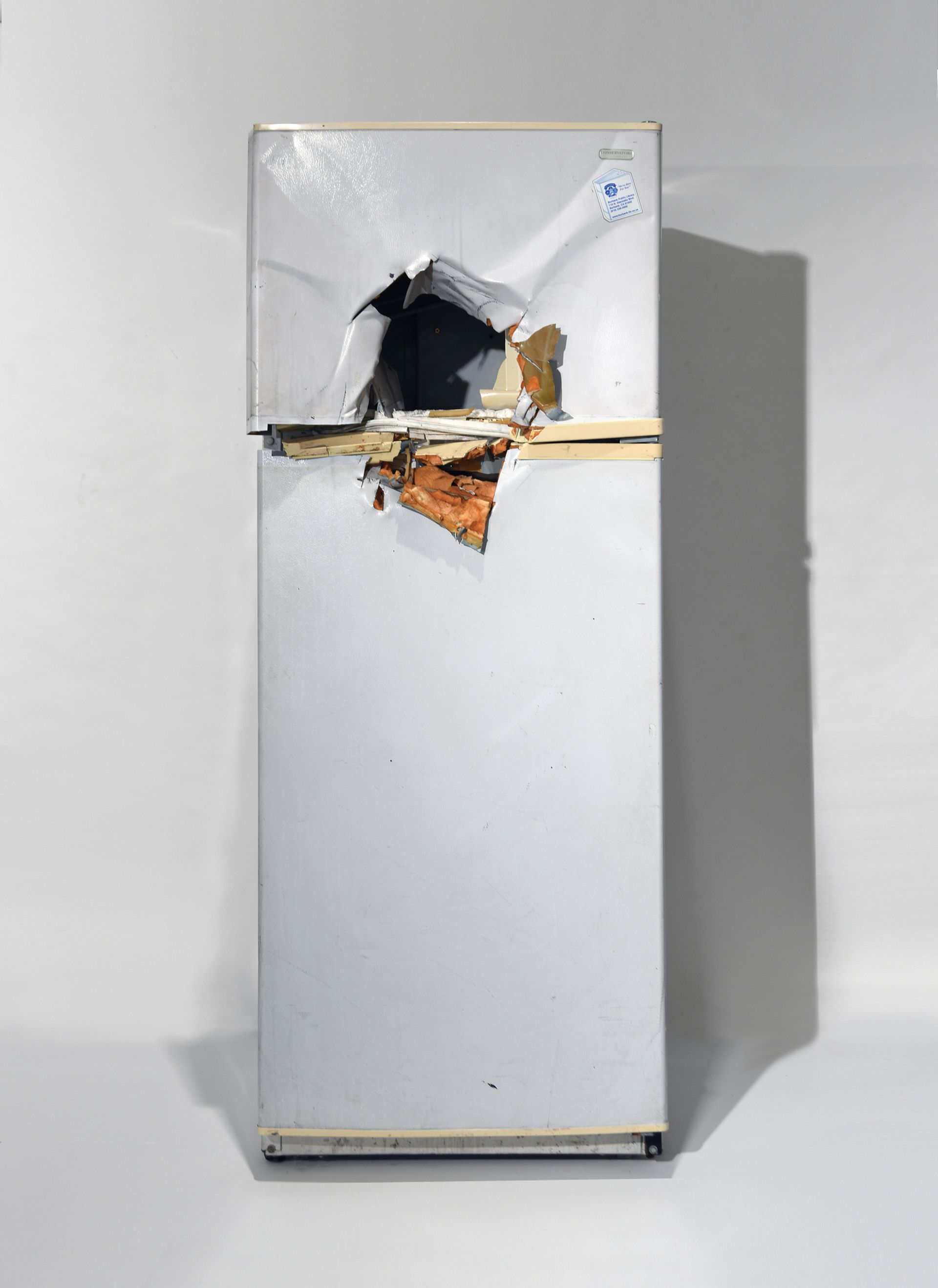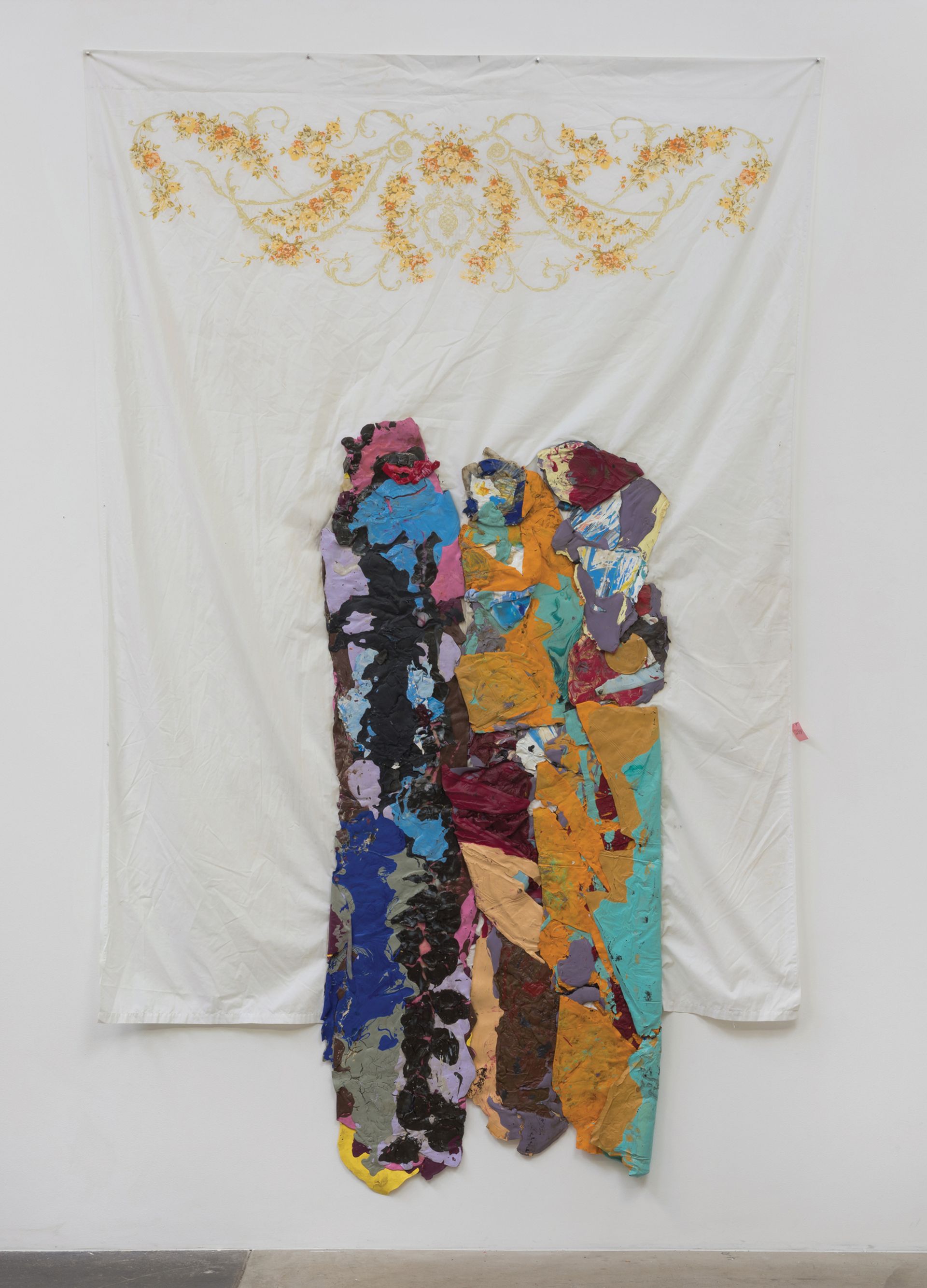Most artists who get a big break have one major solo museum show. Rodney McMillian (b. 1969) is having three. In New York and Philadelphia, three museums are hosting retrospectives of his work, which addresses a range of subjects, from violence in the domestic realm (in Rodney McMillian: Views of Main Street at the Studio Museum in Harlem) to abstracted landscape painting (Rodney McMillian: Landscape Paintings at MoMA PS1) to the history and conception of “blackness” (Rodney McMillian: the Black Show at the Institute of Contemporary Art in Philadelphia).
McMillian began working as an artist in 1999, when he decided to go to art school instead of the business school to which he had recently been accepted. We spoke with him about his interest in history, his use of sheets as canvas and the complicated history of landscape painting.
The Art Newspaper: In 2006, you read, as a performance, the American president Lyndon Johnson’s Great Society Speech from 1964, which laid out a series of programmes to eliminate poverty and racial injustice. What interested you about that speech?
Rodney McMillian: Primarily, I was interested in the text itself. I was in agreement with a lot of its tenets. It calls for thinking about our education system, about economic and racial injustice; there are lots of things in that text from 1964 that still resonated in 2006. I also think it’s beautifully written and very lyrical. [The performance first happened] during the [presidency of George W.] Bush. I did not find his political rhetoric quite as inspiring, nor as lyrical—at least, it wasn’t a poetic I could relate to.

What draws you to history?
Historical texts are deceptive. They suggest the past tense, as if the past is done and we’ve moved on. I’m suggesting that policies and actions and ideas are still being played out. What we are seeing in this current [US] election [cycle] is rooted in decades if not hundreds of years of history. We have to sift through these political texts because they're still in action.
How does that come through in the art on show in New York and Philadelphia?
If there is a through-line in regards to the three shows, it’s about how much you can see history in action. A lot of the work is also about how we understand political texts. The ICA show looks at blackness as a colour, a form, a construct and as something that is projected. At the Studio Museum, the work looks at the politics of our homes and how those politics are formed. The show at PS1 looks at landscape painting through the history of Modernism in America and through the Hudson River School.

The paintings in the PS1 exhibition, which are made on bedding, are quite abstract. How does history figure into that show?
It’s dealing with representation and what landscape means. The Hudson River School paintings were a colonialist endeavour. They’re all about manifest destiny and ideas of the sublime. It’s almost propaganda for conquering the land. My work is not that. It’s not only rooted in consumer objects like bedding material, there is also an economy embedded in the work: there are price tags on the sheets. And then there is another system, the gallery space or a museum space, which has its own economy. And I think those ideas are quite abstract.
• Rodney McMillian: Views of Main Street, Studio Museum in Harlem, New York, until 26 June; Rodney McMillian: the Black Show, Institute of Contemporary Art, Philadelphia, until 14 August; Rodney McMillian: Landscape Paintings, MoMA PS1, New York, until 29 August

